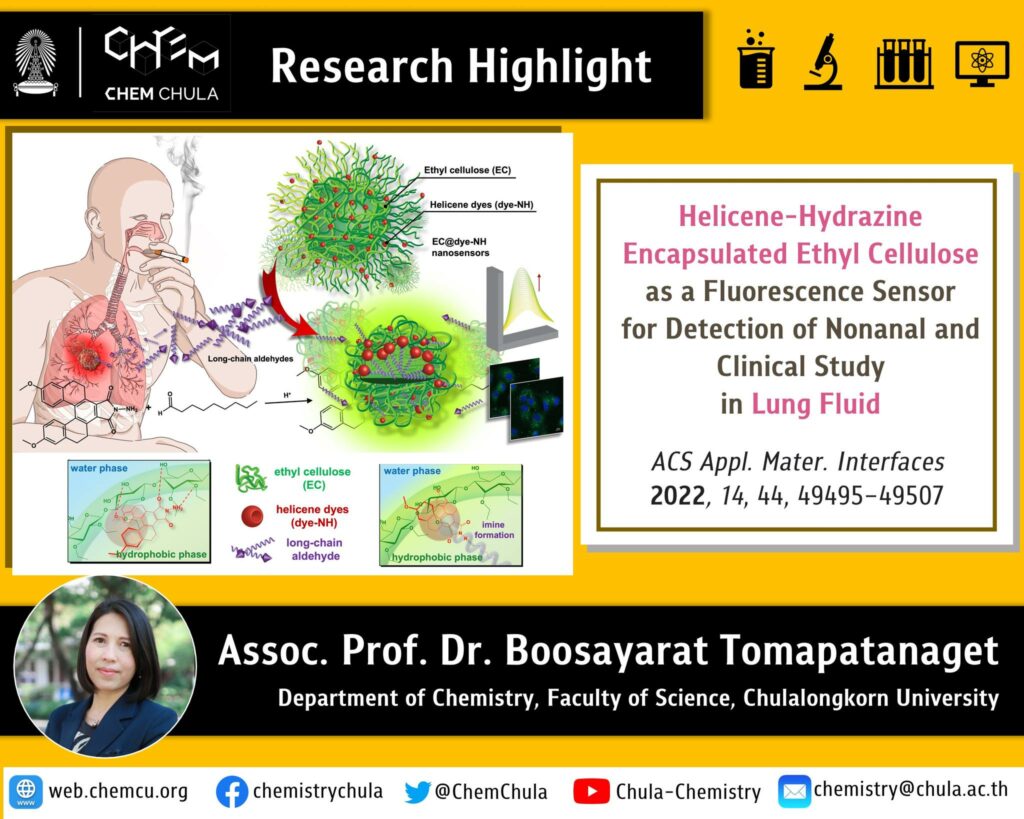The research group of Assoc. Prof. Boosayarat Tomapatanaget has successfully fabricated helicene dye-encapsulated ethyl cellulose (EC@dye-NH) nanoparticles as fluorescence biosensors for specific and selective detection of long-chain aldehydes, which are significant biomarkers of lung cancer. This effective probe employed the idea of an imine formation reaction between hydrazine group of dye-NH and aldehyde, with a dominant aspect of hydrophobic interactions between ethyl cellulose polymer and alkyl chain of aldehyde compounds, inducing self-assembly well-packed encapsulation to enhance fluorescence signal at a wavelength of 540 nm. Additionally, this efficiently promising EC@dye-NH probe system is utilized as a proof-of-concept for diagnosing lung cancer disease in real biological samples, such as lung fluids.
- Boosayarat Tomapatanaget
- Jinnawat Jongkhumkrong
- Isaya Thaveesangsakulthai
- Wannee Sukbangnop
- Chadin Kulsing
- Thanasat Sooksimuang
- Chanat Aonbangkhen
- Somboon Sahasithiwat
- Thitiwat Sriprasart
- Tanapat Palaga
- Naphat Chantaravisoot

